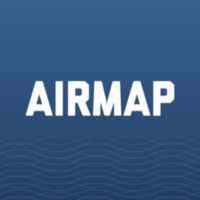
FAA KNOWLEDGE CENTER
What you should know to fly safely and legally?
The Federal Aviation Administration, or FAA, is the government agency responsible for regulating all civil (non-military) aviation. Its oversight includes RC hobbyists who fly radio-controlled model aircraft for fun.
RC hobbyists are considered “recreational users” by the FAA. Specific rules apply to us, intended to ensure public safety in the increasingly busy skies. For example, RC hobby aircraft are not allowed near airports, over stadiums and sporting events, and in security-sensitive areas.
We're also required to have an FAA registration number that goes on any models we fly weighing over 0.55 pounds (250 grams). Not all RC aircraft available from Horizon Hobby need that number on them to fly legally. E-flite® UMX™ micro aircraft are among those that are exempt due to their low weight.
Even unintentionally violating FAA regulations can put an RC hobbyist at risk for criminal and civil penalties — so please be sure to read and understand the rules before going out to enjoy your models.
FAA REGULATIONS FOR FLYING RC HOBBY AIRCRAFT
Before you fly
-
If your RC aircraft weighs over 0.55 lb (250g) and you don’t have an FAA registration number, get one from the FAA website. Mark it on the outside of the model and carry proof of registration with you when you fly. That same registration number can be used on every model you own over 0.55 pounds
-
Be aware that the FAA rules for hobbyists are different from those for commercial RC aircraft operators. If you registered as a recreational RC pilot, be sure to fly only for fun — not for work or business.
Where to fly
The FAA stipulates where RC models can be flown for fun based on whether the location is in controlled or uncontrolled airspace.
-
UNCONTROLLED AIRSPACE is where there are no air traffic controllers directing the air traffic. If you’re an FAA-registered recreational RC pilot or your model aircraft doesn’t require registration, you can fly in these areas without additional FAA permission. You must keep your aircraft at altitudes below 400 feet.
-
CONTROLLED AIRSPACE is where air traffic controllers actively communicate with, direct, and separate all air traffic (such as near airports). You’ll need special permission from the FAA to fly in any controlled airspace.
The FAA developed the LAANC system (Low Altitude Authorization and Notification Capability) to automate the approval process for flying in controlled airspace. If approved, you can receive authorization nearly in real time. LAANC is also easy to use. Learn more about it here.
Horizon Hobby recommends two LAANC providers, Kittyhawk and Airmap
-
To identify whether your location is in controlled or uncontrolled airspace, you can use one of the LAANC provider apps or the FAA’s free B4UFLY Mobile App (available from the App Store for iOS and Google Play for Android). Its interactive maps show where recreational RC aircraft are and are not allowed.
While you fly
-
Keep your RC aircraft within your line of sight, or within the sight of an observer standing next to you who can communicate directly with you.
-
Avoid flying at night unless your aircraft is equipped with lighting that reveals its location and orientation at all times.
-
Never fly your RC model aircraft in the vicinity of manned aircraft.
-
Do not fly directly over people or moving vehicles.
-
Never fly where your RC aircraft could interfere with emergency response activities, such as firefighting, law enforcement, or accident response.
-
Never fly an RC aircraft under the influence of alcohol or drugs (including prescription and over-the-counter medications whose side effects could impact your ability to maintain control).
-
Do not fly your RC aircraft in a careless or reckless manner.
Horizon Hobby also recommends
-
Inspecting your model carefully before every flight for damage it may have received during previous flights, transport, or storage.
-
Charging your flight batteries and transmitter fully before flying.
-
Keeping your hands on the sticks of your radio transmitter while flying to maintain control.
-
Using an RC flight simulator such as RealFlight® to learn, practice, and keep your flying skills sharp.
-
Getting in touch with your local AMA club to enjoy a safe space to fly.




